The Elton Hall estate is near Peterborough, and the 3800 acre estate straddles the Northants/Cambs. county boundary.
The Hall is a remarkable building of somewhat castellated and part-Gothic appearance, of 15th century origins but with 17th, 18th and 19th century additions.
Inside are a number of grand rooms with fine decoration and furnishings. There is a notable collection of paintings.
The formal gardens adjacent to the house were laid out in 1913 and restored in the 1980s. The Gothic orangery was built to celebrate the Millenium. I didn’t spend much time in the impressive gardens on my visit as the weather was wet.
House and gardens are set in 200 acres of parkland. Also on the estate are a garden centre and a restaurant.
House and gardens provide enough to look at to occupy the visitor for the 3 hours opening time (2-5pm). Opening dates are somewhat restricted. The retail outlets, on the other hand, are open daily.
Category: Midlands
location
Apethorpe Hall, Northants.
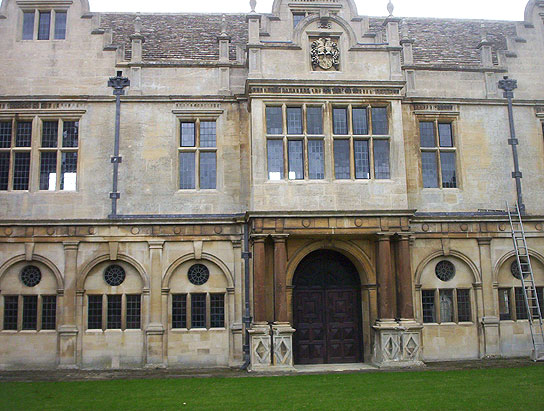
Apethorpe Hall is a huge Jacobean mansion, built around three courtyards. Viewed from the village side, the house is a great length of pale stone, straggling across one’s line of view like some beached stone ship. Close to, and inside the first courtyard, the quality of the architecture is evident. Inside, there are some interiors considered of national importance, and some interesting plasterwork and woodwork, including a rare Jacobean staircase.
English Heritage bought this place several years ago, after it had been neglected by an absentee owner, and spent several million pounds to make the roofs watertight and stop the building from falling down. The interiors remain in need of total refurbishment.
It was hoped that Apethorpe could be sold on to a private owner with bottomless pockets, but so far there have been no takers, and there has been whining from the tabloid press about the waste of public money. It is unfortunate that the last long-term owner of the house moved to an adjoining property, left it with no access except for a narrow village road, and planted a line of fast-growing trees to block out the view of the countryside.
On the far side of the house are gardens which have been well kept up, and a view across the gardens towards the house gives the illusion of a fine house still in its prime.
If you want to see Apethorpe for yourself, keep a sharp lookout for notice of the guided tours that take place on limited dates during the summer months. There is a fee for these.
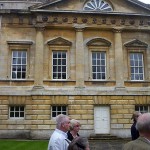
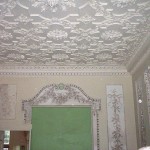
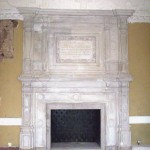
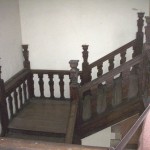
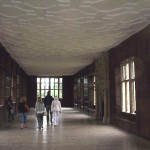
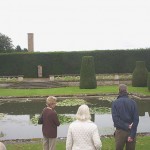
RAF Cosford, Shropshire

Note the unique display of three V-bombers in the Cold War hall. Admission is free, but there is a charge for car parking. Visitors are expected to ‘check in’ via the visitor centre building.
I revisited in 2023.


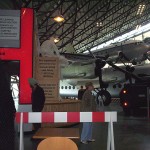










Kirby Hall, Northants.
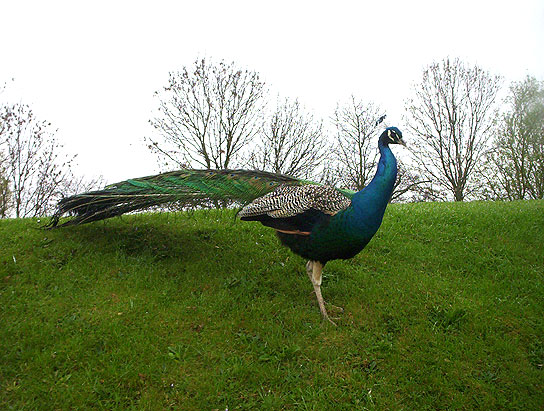
This is a great Elizabethan and 17th-century house, now partly roofless, though the Great Hall and state rooms are still roofed and intact. These rooms are refitted and redecorated to 17th and 18th century specifications. There is an outer walled courtyard, while buildings, some now roofless, surround the inner courtyard. The entry to the inner courtyard has an impressive three-tier porch.
The bulk of the building, with its elaborate stonework, and many tall chimneys, remains impressive. The state rooms have a pair of large and distinctive curving bay windows. Inside, the interiors and exhibitions are of interest. Outside is a great 17th-century garden, recently recreated. Peacocks roam in the grounds. An audio tour is available.
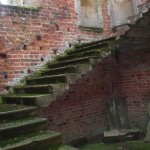
Broughton Castle, Oxfordshire
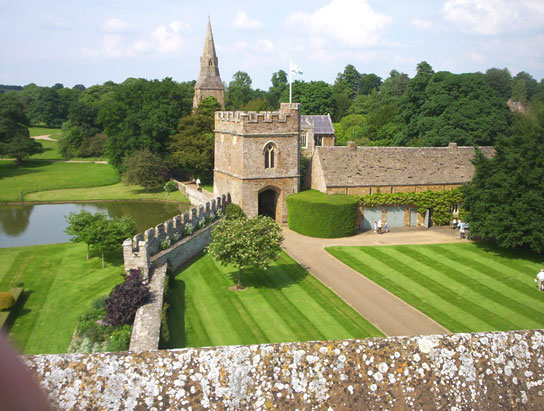
A fortified house dating in parts from the 12th century, and altered, extended or remodelled many times since. It is constructed mainly of ironstone. The interior contains a number of grand rooms and the small ‘Council Chamber’ contains relics from the Civil war period. The current occupants are Lord and Lady Saye & Sele who have done much to preserve the house and record its history. They maintain a website which contains a great deal of information about the castle’s history, and a pictorial tour. As the owners are not shy of pointing out, the house gets five stars in “The Thousand Best Houses of England”.
This is an interesting place to visit, as one enters across a moat, through a gatehouse and then follows a route around the house though an ancient arched undercroft, grand rooms, staircases, corridors, and into small upstairs rooms and IIRC a rooftop. Outside, there are some attractive gardens. I must have liked it, judging by the number of photos I took.
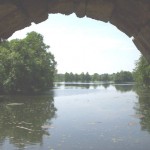
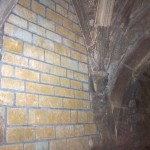
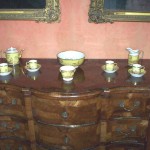
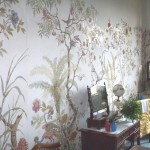
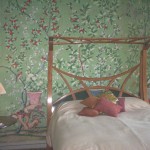
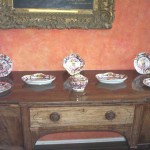
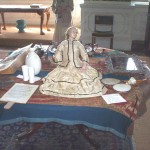
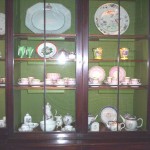
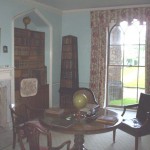
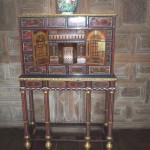
Rushton Hall, Northants.
Rushton Hall is a most impressive place built around a square central courtyard. It dates from 1438, but much of the present structure seems to be Victorian. It’s now an up-market hotel, but they don’t mind visitors having a look at the public rooms (on the ground floor facing the water), and if you ask in the bar, they’ll probably give you a booklet about the history of the place. If you have a serious interest you could contact the general manager about your visit in advance. The public room interiors and ceilings are quite impressive, as is the courtyard. The bar, housed in what was the great hall, with stained glass windows, is the most impressive room. The house changed hands in 1853 for £165,000, at a time when the average dwelling cost several pounds, but it was sold in the 1950’s for £1.
The hotel reception is to the left of the main entrance, and the public rooms and bar are further on in the same direction. The drinks, predictably, are expensive 🙂
It seems there are some public access days: Hotel website.
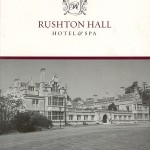
Rushton Triangular Lodge, Northants.
English Heritage.
This strange triangular building was designed by Sir Thomas Tresham, and constructed between 1593 and 1597. The number three is apparent everywhere in the design, with three floors, trefoil windows, and three triangular gables on each side. It is open several days a week in the warmer months.
I navigated to the location using sat-nav. It’a a curious building and worth a visit if you are in North Northants. The Lodge was formerly part of the Rushton Hall estate, the Hall being about a mile away. The Hall, now a hotel, is worth seeing.
Kelmarsh Hall Gardens, Northants.
The gardens were originally laid out by society decorator Nancy Lancaster in the 1930’s, and now have a Grade II* gardens listing from English Heritage, and are also a RHS Partner garden. It includes herbaceous borders, a rose garden, a walled kitchen garden, and a traditional greenhouse. Worth a visit if you like gardens at all.
The gardens are open several days a week in the warmer months.
Kelmarsh Hall & Croome Collection, Northants.
The house was built in the 1730’s by virtuoso architect James Gibbs, and is a very attractive red-brick building of symmetrical and reticent design. The present interior decoration owes much to society decorator Nancy Lancaster, who lived at the house. Several rooms upstairs are used for an exhibition of the Croome Collection of fine 18th century furniture . Outside, behind the house are extensive and popular gardens, and surrounding house and garden is a working estate.
The house and contents are well worth a visit, and the gardens are also a popular attraction. The house is open on Thursdays only, plus bank holidays (Sun & Mon), but the gardens are open much more often. It might be wise to arrive in good time if you want to see everything, as admission to house or Croome is by two separate conducted tours. House, Croome and garden are all treated as separately charged items, but you can get combined tickets.
Woolsthorpe Manor, Lincs.
National Trust.
Woolsthorpe is a modest manor house, noted as the birthplace of Sir Isaac Newton. The famous apple tree can still be seen from Newton’s bedroom window. I recollect that some period interiors are on display. There are also some exhibitions and science-related displays, and a short film about Newton.
It does not take very long to go round the house itself.
